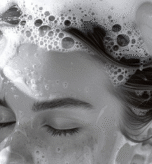When it comes to maintaining healthy hair, most people focus on products, styling, and protective routines. But did you know that the key to effective hair care lies in understanding your hair porosity? Hair porosity refers to your hair’s ability to absorb and retain moisture, and knowing yours can make the difference between dull, brittle strands and vibrant, nourished hair.
What is Hair Porosity?
Hair porosity describes how well your hair can absorb and hold moisture or oils. It depends on the condition of the hair cuticle—the outer layer that protects the inner hair shaft.
Porosity is generally classified into three types:
- Low Porosity Hair – Cuticles are tightly packed, making it difficult for moisture to enter.
- Medium (Normal) Porosity Hair – Cuticles are slightly raised, allowing for balanced moisture absorption and retention.
- High Porosity Hair – Cuticles are highly raised or damaged, allowing moisture to enter quickly but escape just as fast.
Why Hair Porosity Matters
Understanding your hair porosity helps you:
- Choose the right products: Not all hair products work the same for everyone. Porosity guides you toward what will be most effective.
- Develop better routines: Knowing how your hair interacts with water and oils helps you create a tailored haircare regimen.
- Prevent damage: Using the wrong products for your porosity may lead to dryness, frizz, or breakage.
- Improve moisture balance: Porosity directly impacts hydration, which is essential for hair health and growth.
How to Test Your Hair Porosity
1. The Float Test
- Take a clean strand of hair.
- Drop it into a glass of water.
- Observe:
- If it floats on top, it’s low porosity.
- If it sinks slowly, it’s medium porosity.
- If it sinks quickly, it’s high porosity.
2. The Slip Test
- Run your fingers up a strand of hair toward the scalp.
- If it feels smooth, it’s likely low porosity.
- If it feels bumpy or rough, you may have high porosity.
Characteristics and Care for Each Hair Porosity Type
1. Low Porosity Hair
- Traits: Resistant to moisture, takes a long time to dry, prone to product buildup.
- Care Tips:
- Use lightweight, water-based moisturizers.
- Apply heat (like steam or warm towels) to help open cuticles.
- Avoid heavy oils and butters that sit on top of strands.
2. Medium (Normal) Porosity Hair
- Traits: Absorbs and retains moisture well, requires minimal maintenance.
- Care Tips:
- Stick to a balanced routine of moisturizing and sealing.
- Avoid over-processing with chemicals or heat to maintain balance.
- Deep condition occasionally to maintain strength.
3. High Porosity Hair
- Traits: Absorbs moisture quickly but loses it just as fast, prone to frizz, tangling, and breakage.
- Care Tips:
- Use heavier creams, oils, and butters to lock in moisture.
- Incorporate protein treatments to strengthen cuticles.
- Minimize heat and chemical treatments to prevent further damage.
Common Misconceptions About Hair Porosity
- Porosity doesn’t equal hair type: Curly, straight, or wavy hair can fall under any porosity category.
- Porosity can change: Heat styling, chemical processing, and environmental damage can alter your hair’s porosity over time.
- More products aren’t always better: The right products matter more than the number of products you use.
Conclusion
Hair porosity is one of the most overlooked aspects of hair care, yet it’s one of the most important. By identifying whether your hair is low, medium, or high porosity, you can select products and routines that work best for your strands. The result? Healthier, shinier, and stronger hair that thrives under the right care.
Disclaimer
This article is for informational purposes only and should not be considered a substitute for professional haircare or dermatological advice. Individual results may vary based on genetics, environment, and overall health. For personalized recommendations, consult a licensed hairstylist, trichologist, or dermatologist.



